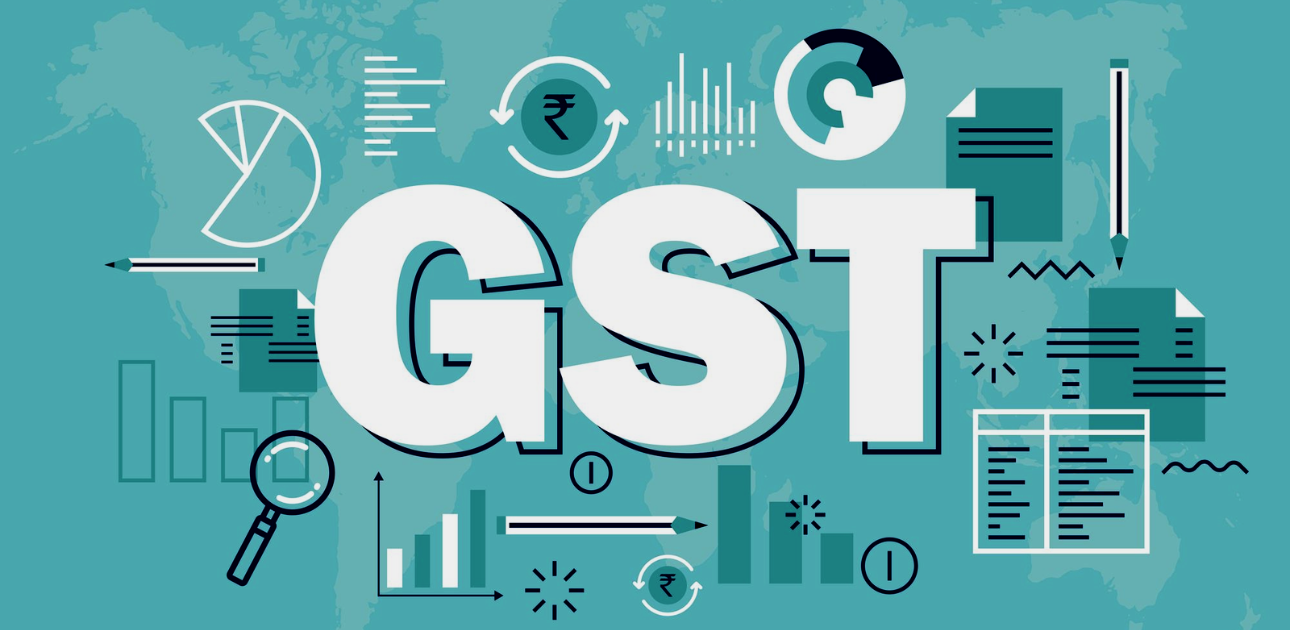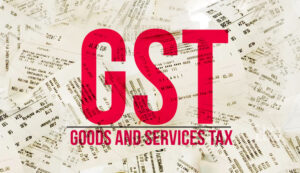Major reforms were announced following the 56th Goods and Services Tax (GST) Council meeting on September 3, 2025
Published: September 4, 2025
Overview
The 56th meeting of India’s Goods and Services Tax (GST) Council, held on September 3, 2025 in New Delhi, delivered the most sweeping overhaul of the GST framework since its 2017 launch. Framed as a “next‑generation” package, the reforms pursue three goals in tandem: easing the cost of living, simplifying the rate structure, and accelerating dispute resolution and refunds to improve cash flow for businesses. The Council compressed the four‑tier regime into a simpler two‑rate structure—an 18% standard rate and a 5% merit rate—and carved out a special 40% de‑merit rate for a narrow band of sin and luxury goods. It also announced targeted exemptions for individual life and health insurance and significant rate cuts across healthcare, agriculture, FMCG, hospitality, and transport. Alongside rates, the Council green‑lit institutional and process reforms, including the operationalisation of the GST Appellate Tribunal (GSTAT) and the adoption of a faster, risk‑based refund mechanism for inverted duty claims.
This article unpacks the headline changes, timelines, sector impacts, compliance to‑dos, and the macro implications for inflation and growth.
The new rate architecture: from four tiers to two (+ one)
1) A simpler core: 18% and 5%
The Council endorsed a “Simple Tax” structure with two principal slabs:
- 18% standard rate: the anchor for most taxable supplies.
- 5% merit rate: applied to essentials, mass‑consumption items, agriculture inputs and machinery, and a broad list of healthcare goods.
This rationalisation eliminates the erstwhile 12% slab for most items and shifts many 12%/18% products to 5% based on sectoral priorities such as employment intensity, healthcare affordability, and rural consumption. Not everything moves to 5%, but the overall incidence on core consumption baskets falls materially.
2) A targeted de‑merit rate: 40%
To disincentivise harmful consumption and preserve revenue neutrality, the Council introduced a 40% slab for a limited set of sin and luxury products. The Council also decided that for specified tobacco and pan masala products the tax base would shift to Retail Sale Price (RSP) to curb under‑valuation. Importantly, the timeline for actually moving these categories into the new 40% slab is linked to the compensation‑cess loan repayment schedule; until then they continue under the existing rates and cess structure (see timeline section below).
Big‑ticket rate cuts and exemptions: what changes for consumers
Insurance becomes GST‑exempt
A landmark decision is the exemption of GST on all individual life insurance policies (term, ULIPs, endowment) and all individual health insurance policies (including family floaters and senior‑citizen plans). For retail policyholders, premiums no longer carry the 18% GST tag. The exemption also extends to reinsurance of such individual policies, reinforcing premium affordability. (Note: “exempt” is distinct from “zero‑rated”; insurers won’t charge GST on these products, and input tax credits relating to exempt supplies may be restricted, which insurers will need to factor into pricing models.)
Healthcare goods become cheaper
The rate package significantly lowers costs across the medical value chain:
- 33 life‑saving drugs and medicines: reduced from 12% to NIL; an additional set of drugs (including select cancer and rare‑disease therapies) from 5% to NIL; all other drugs and medicines drop from 12% to 5%.
- Medical devices and apparatus used for medical, surgical, dental, veterinary, and diagnostic purposes fall from 18% to 5%. Consumables like bandages, gauze and certain diagnostic kits move from 12% to 5%.
Together, these measures aim to lower out‑of‑pocket medical expenditure, especially for chronic care and elder‑care households.
FMCG and daily‑use items see broad relief
A wide list of household products shift into the 5% merit bracket, including hair oil, toilet soap bars, shampoos, toothbrushes, toothpaste, tableware and kitchenware, and other household articles. In food and beverages:
- UHT milk: 5% to NIL.
- Pre‑packaged and labelled chena/paneer: 5% to NIL; all Indian breads (roti/chapati, paratha, parotta, etc.): NIL.
- Packaged namkeens, bhujia, sauces, pasta, instant noodles, chocolates, coffee, preserved meat, cornflakes, butter, ghee, and more: 12%/18% down to 5%.
Expect price cuts to flow through as inventories turn and pricing files are updated.
Mobility and housing inputs
- Small cars and motorcycles ≤350cc: 28% to 18%; three‑wheelers: unified 18%.
- Buses, trucks, ambulances: 28% to 18%; all auto parts harmonised at 18% irrespective of HS code.
- Cement: 28% to 18%.
These changes reduce acquisition costs for mass mobility and logistics fleets and lower construction input costs, potentially softening housing and infrastructure budgets.
Agriculture and renewables
- Tractors and an array of agricultural machinery (soil preparation, harvesting, threshing, balers, mowers, composting machines, etc.): 12% to 5%.
- Renewable energy devices and parts for their manufacture: 12% to 5%.
Lower GST on farm machinery can catalyse mechanisation in smallholder geographies, while the renewables cut is aligned with India’s energy‑transition targets.
Labour‑intensive and traditional sectors
- Handicrafts and intermediate leather goods move to 5%.
- Marble, travertine and granite blocks: 12% to 5%.
These reliefs are aimed at employment‑rich sectors that were grappling with cost pressures and inverted duty structures.
Services for the “common man”
- Hotel accommodation with value up to ₹7,500 per unit per day: 12% to 5%.
- Beauty, fitness and wellness services—gyms, salons, barbers, yoga centres, etc.: 18% to 5%.
With services inflation elevated in recent months, these cuts are designed to support discretionary consumption without stoking headline inflation.
Timelines and phasing: when do the new rates kick in?
A staggered implementation is built into the package to ensure fiscal smoothness and operational readiness:
- From September 22, 2025:
- All service‑rate changes take effect.
- Most goods move to their new rates except specific sin goods (tobacco, gutkha, pan masala, cigarettes, bidi, unmanufactured/chewing tobacco), which temporarily remain at existing rates and compensation‑cess.
- Deferred transition for sin goods: The move of these goods into the final 40% de‑merit slab and revised base rules will occur after full discharge of compensation‑cess loan obligations. The actual transition date will be separately notified by the Union Finance Minister.
Businesses should therefore program tax engines with two milestones: September 22 for the bulk of changes, and a later notified date for the sin‑goods transition.
Institutional and process reforms: faster justice, faster cashflow
GST Appellate Tribunal (GSTAT) operationalisation
The Council set a firm schedule to make GSTAT operational for accepting appeals before end‑September 2025, with hearings beginning before end‑December 2025. It also recommended June 30, 2026 as the limitation cut‑off for filing backlog appeals. The Principal Bench will double as the National Appellate Authority for Advance Ruling, improving consistency and speed in jurisprudence.
Why this matters: The tribunal is the missing link in the GST dispute pipeline. Its activation should reduce case backlogs clogging High Courts, lower litigation costs, and create clearer compliance signals for industry.
90% provisional refunds for inverted duty
To ease working‑capital strain, the Council approved an administrative rollout of 90% provisional refunds for inverted duty structure (IDS) claims, using data‑driven risk evaluation (similar to the risk‑based provisional refunds already available for zero‑rated supplies). This is especially relevant for sectors like textiles, renewables, and select FMCG categories where inputs face higher rates than outputs.
Process simplification (to be notified)
The Council indicated a suite of process reforms to facilitate trade—covering registration, return rationalisation, and valuation clarifications (for example, on restaurant services in “specified premises” and lottery valuation rules). Detailed notifications and circulars will follow; businesses should watch for FAQs and annexures from CBIC and adjust SOPs accordingly.
Sector‑wise impact: winners, watch‑outs, and pricing maths
Insurance
- Immediate consumer benefit from GST‑exempt premiums on individual life and health covers.
- Pricing recalibration for insurers: with exemption (not zero‑rating), insurers may face input‑tax credit (ITC) blockages on procurement related to exempt supplies. Expect actuarial and finance teams to re‑cost portfolios; competition and regulatory scrutiny should push pass‑through of savings to policyholders.
Healthcare
- Hospitals and clinics benefit from lower GST on devices and consumables; supply‑chain savings can translate into lower procedure packages or better margins, depending on payer mix and competition.
- Pharma and med‑tech see improved price competitiveness on domestic sales and potential boost to volumes in chronic therapies.
FMCG & retail
- MRP resets across soaps, shampoos, oral care, packaged foods, and kitchenware. Large organised retailers may move quickly given ERP agility; smaller brands may need longer. Expect promotional campaigns timed to post‑notification inventory cycles.
Auto & mobility
- Two‑wheelers, entry‑segment cars, and three‑wheelers become more affordable, supporting rural and urban mobility and ride‑hailing fleets.
- Auto parts at a unified 18% remove HS disputes and value‑chain friction.
Construction & infrastructure
- Cement at 18% reduces project costs; the net pass‑through depends on contract structures (lump‑sum vs item‑rate) and ITC accumulation. Infrastructure developers and housing projects should revisit pricing, escalation clauses, and procurement calendars.
Agriculture & renewables
- Farm mechanisation gets a push via cheaper tractors and implements; service providers in custom‑hiring centres (CHCs) gain competitiveness.
- Renewable OEMs and EPCs will see improved project IRRs from lower device and component GST.
Inflation, growth, and the fiscal balance: what to expect
- Inflation: The basket‑heavy relief on FMCG and healthcare is disinflationary. However, the net CPI impact will depend on pass‑through speed and the share of excluded services (e.g., telecom) that remain at 18%.
- Growth & consumption: Lower incidence on mass items and mobility can lift real incomes and consumption. Services cuts (hospitality and wellness) should aid contact‑intensive segments still normalising post‑pandemic.
- Revenue: The de‑merit 40% slab and RSP base for tobacco/pan masala safeguard revenues. Compliance gains via tribunal activation and risk‑based refunds/analytics can further protect the tax base even as rates fall for priority sectors.
What gets cheaper—and what stays put (for now)
Cheaper soon (from September 22, 2025): individual life & health insurance (GST‑exempt); UHT milk, paneer (pre‑packaged), Indian breads (NIL); a broad set of medicines and medical devices; soaps, shampoos, oral care; packaged foods like noodles, pasta, sauces; tractors and a spectrum of agri‑machinery; renewable devices and parts; hotel rooms up to ₹7,500; gyms, salons, barbers and yoga services; small cars, motorcycles, three‑wheelers; buses, trucks, ambulances; cement and auto parts.
Unchanged for now: tobacco, gutkha, pan masala, cigarettes, bidi and related products remain at current rates and compensation‑cess until the cess‑loan ledger is cleared; the shift to the 40% slab will be notified later.
Compliance checklist for businesses
- Rate mapping: Update tax codes and product masters to reflect new slabs; align with HSN‑wise and sector‑wise annexures. Create interim rules for sin‑goods that remain on old rates.
- Pricing & contracts: Rework MRPs, price lists, and discount structures. For B2B, revisit change‑in‑law clauses and align invoicing for supplies spanning the transition date.
- ITC reviews: For insurers and any business supplying newly exempt services, reassess ITC eligibility and reversal computations; anticipate margin recalibration.
- ERP changes & testing: Implement and test GST configuration changes (rates, exemptions, RSP valuation where applicable) in staging before go‑live.
- Refunds: Prepare for faster 90% provisional refunds on inverted duty claims; ensure data quality to benefit from risk‑based processing.
- GSTAT readiness: Catalogue pending disputes; ready case files to meet the end‑September acceptance window and the June 30, 2026 limitation date for backlog appeals.
- Training & SOPs: Conduct workshops for tax, procurement, sales and customer‑service teams; prepare customer communication on revised pricing and tax treatment.
Open questions and what to watch
- Notifications & circulars: The fine print—exact HSN lists, explanatory notes, and FAQs—will shape edge cases (e.g., composite vs mixed supplies in wellness packages, restaurant “specified premises” clarification, and lottery valuation changes).
- Pass‑through monitoring: Competition and consumer‑affairs oversight will determine how quickly GST cuts show up in shelf prices and premiums.
- Sin‑goods transition date: Watch for the notification that moves tobacco/pan masala categories into the 40% slab and RSP base.
- State implementation: While the Council decision is unanimous, state‑level administrative readiness (e.g., tribunal benches) will influence the pace and uniformity of rollout.
Bottom line
The 56th GST Council meeting marks a decisive pivot toward a simpler, fairer GST—two principal rates for most of the economy, a sharp de‑merit rate for a small set of harmful/luxury goods, and a clutch of exemptions and reductions targeted at healthcare, rural supply chains, mobility, and everyday consumption. Crucially, the package is more than a rate card: it fixes institutional plumbing by activating the appellate tribunal and modernising refunds. For households, the immediate wins are cheaper healthcare and insurance premiums and a lighter grocery basket. For businesses, the wins are clarity, working‑capital relief, and a more predictable dispute‑resolution pathway.
Execution will make or break the promise. With a clear September 22 go‑live for most changes and a phased approach for sin goods, companies have a short runway to reprice, reconfigure, and communicate. Do that well, and the next quarter could feel like the real start of GST 2.0.
https://bitsofall.com/https-yourblog-com-nemo-money-on-ai-guided-investing-regulation/








